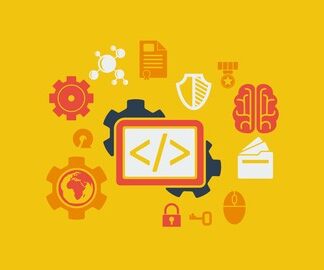
If you find yourself needing assistance at any point throughout the tutorial series, feel free to enroll in The Complete Ethical Hacking Course Bundle for 1 on 1 help!
https://josephdelgadillo.com/ethical-hacking/
Below is a list of the courses included in the bundle:
The Complete Ethical Hacking Course for 2018!
http://bit.ly/2leW0j4
Certified Ethical Hacker Boot Camp for 2018!
http://bit.ly/2yKbler
The Complete Ethical Hacker Course: Beginner to Advanced!
http://bit.ly/2i3kirq
Build an Advanced Keylogger for Ethical Hacking!
http://bit.ly/2yMl3gI
Hello everybody and welcome to this tutorial. Today, we will be covering our working environment. I will show you how you can set it up.
So, first off, we need to install VirtualBox. Now it doesn’t matter if you’re running Mac OS, Linux, or Windows, you will still need to do this, for several reasons. We’re going to be editing configuration files, and we are going to be be doing it as a root user, so we are always facing the prospect that we might break something. If we do mess something up, it’s much better to be working within a virtual environment. Even if you do mess something up, and even if you don’t know how to fix it, it doesn’t really matter. It is only a virtual machine. You don’t really have any data of importance on it. However, if you mess something up on your main machine, that can be problematic. If you’re forced to reinstall it, you will need to back all of your data up, you will need to figure out where everything is, etc. You may try fixing the problem, and depending on what that is, it could consume a large amount of your time. So, just take my advice install VirtualBox. It’s not that complicated, it’s pretty simple, I’ll show you how to do it in a minute.
There is another reason why we’re installing a virtual machine, and that is safety. We are going to be downloading a lot of stuff from the net, and even though I will be using websites that I consider to be safe, and that many other people consider to be safe, it is always good to have that extra layer of protection. So, even if something happens in your virtual machine, even if it is compromised, it’s fine. It’s a virtual machine. There is nothing of importance there. Your private information is not there, your credit card is not there, there is literally nothing there aside from the free tools that we will be using. So, without further ado, let’s just go ahead and see how VirtualBox is installed.
Now, there are two ways of completeing the installation process. One is preferable over the other. So, the first method is a lot simpler. Go ahead open up your favorite browser, mine is Firefox, and use your favorite search engine. Type in VirtualBox, press enter, and there you go. You can also use the following link:
https://www.virtualbox.org/wiki/Downloads
Straight off the bat you have Oracle’s official site for VirtualBox. Go ahead and open it, and in the upper-left corner it says About, Screenshots, Downloads, Documentation, etc. For the time being click on Downloads, excellent! So here you have a list of host machines. We have VirtualBox for Windows hosts, for OS X hosts, for Linux hosts, Solaris hosts. Actually, for Solaris you can download it from the repositories immediately, but for the time being we cannot use the repositories. We first need to configure them in Linux, and repositories in Linux are places from where you pull your software for your Linux distribution. Anyway, we will need VirtualBox for Linux hosts. I have already downloaded it in order to save time in this tutorial, but you just click on it and then it prompts the download.
VirtualBox is available for multiple Linux distributions. So you have Ubuntu, you have Debian. I am not sure why they have separated Ubuntu and Debian, as Ubuntu is based on Debian, and pretty much everything that works on Ubuntu will work on Debian as well. You have openSUSE, but for the time being I am interested in Fedora. At the time of recording this, Fedora 21 is available, but Fedora 18 will work perfectly fine. It will run without any problems. Anyway, right next to it you have i386 and amd64. This is referring to the 32-bit and 64-bit architectures. If you do not know what your machine is, whether it’s 32-bit or 64-bit, not a problem. Go ahead and open up your terminal, type in uname -a, and press Enter. You don’t need to be root to do this, you can do this as pretty much any user, and you get a listing of information here. So you have the Linux platform, localhost, domain, kernel version, and Fedora distribution as well, it’s number 20, and then you have the architecture. So, it’s x86_64. There we go, 64-bit architecture. Fantastic! Now that we know our system architecture, you can go ahead and click on the corrresponding link. If you’re using a 32-bit system, just click on the 32-bit version. The procedure is absolutely the same, there are literally no differences. It gives me an option to save a file, so just click save, and then click OK. You will find the file in the default downloads folder unless you have configured it in a different fashion. I’m just going to go ahead and cancel it because, as I said, I’ve downloaded it previously in order to save some time in this tutorial.
So, go to your terminal window, clear the screen, you will need to be root in order to perform this. Just type in su and press enter, and type in your password. There is a tool for managing rpm packets, as this is a Red Hat distro. All of the software packets for it have the extension .rpm. Now, I am currently using the Linux terminal, and I will give you detailed instructions throughout the course, but for the time being just follow along. So there’s a command called ls, and then I want to go to the folder downloads. Chronic, that’s me, that’s the username, downloads, and VirtualBox, there we go, press ENTER. I’m going to clear the screen one more time, there we go. Anyway, you see this extension that I have marked, it says .rpm. Now, .rpm represents a type of packet that is meant specifically for certain Linux distributions, such as Red Hat, Fedora, CentOS, and a few others. What you can do is use your default rpm software, so just type in rpm -i, the -i argument is for install, and then specify the path to your packet, to your package, so /home/Chronic/Downloads/VirtualBox, and press enter. Now, this process is automated, there isn’t much that you need to do here. You may need to press yes, and that’s it. However, this is not the method that you should be using. This is a method that you can use, but I wouldn’t advise it. If you do install it like this it tends to break with newer updates, so it can be a bit problematic. I will show you another method in the next tutorial where you can actually use yum, which is default packet manager in order to install this packet, and then update it accordingly. In any case, I bid you farewell, and I’ll see you in the next tutorial.
The remainder of the tutorial videos can be found in this YouTube playlist:
You can also enroll in the course and download the videos for offline viewing:
https://jtdigital.teachable.com/p/hacking-free/
Subscribe on YouTube – https://www.youtube.com/c/JosephDelgadillo?sub_confirmation=1
Follow on Steemit – https://steemit.com/@jo3potato










hello sir!
i want to ask you that you that which is the appropriate version of kali linux to install in Virtualbox Version 5.1.28 r117968 (Qt5.6.2) on a windows 7 os
I would install the newest version of Kali.